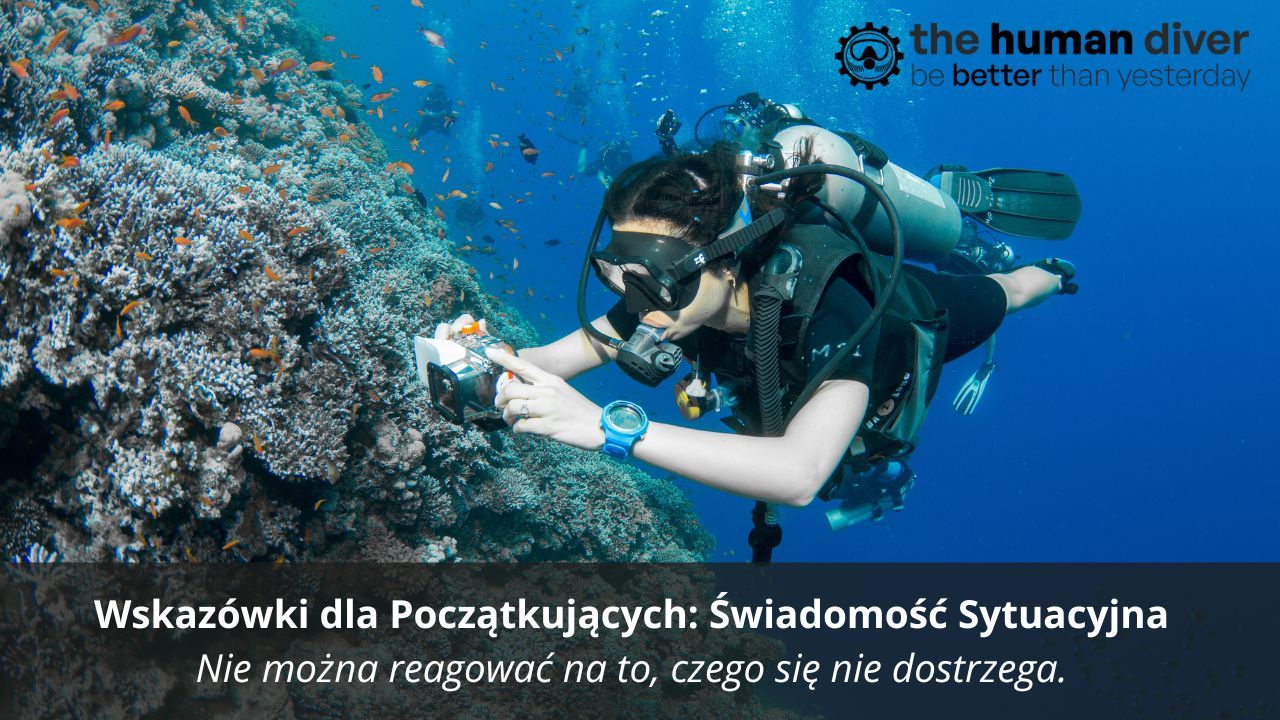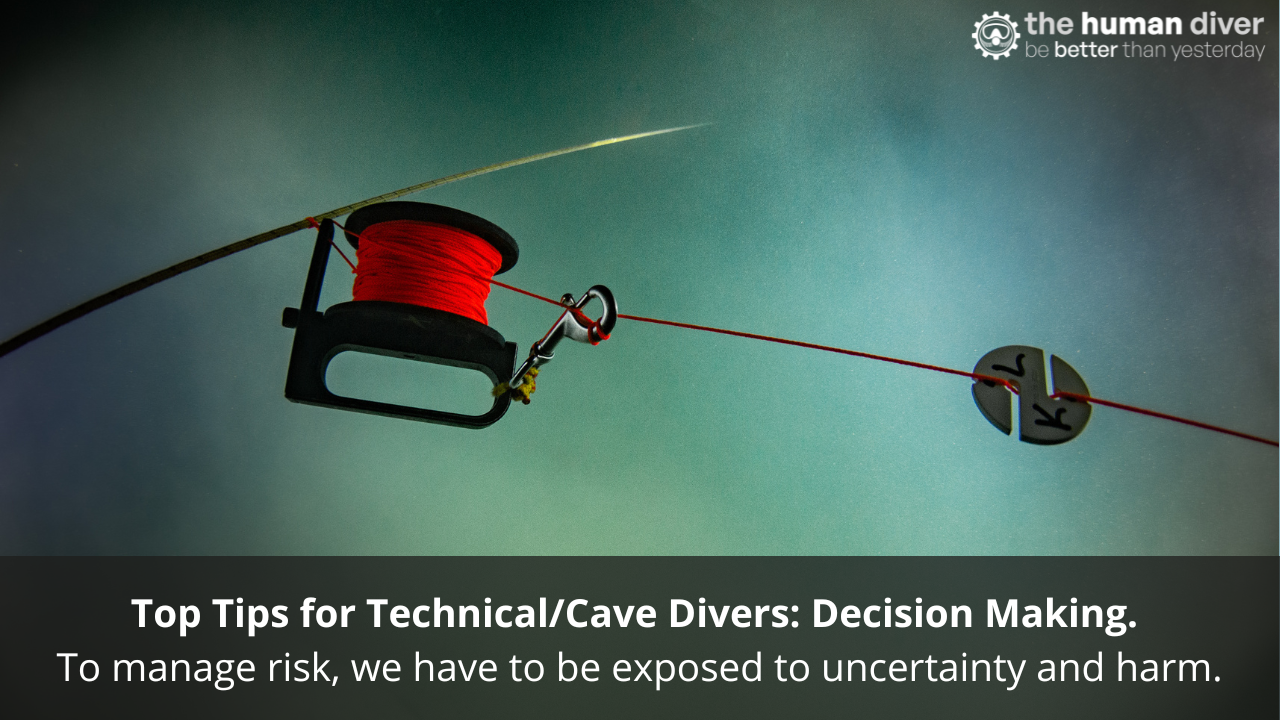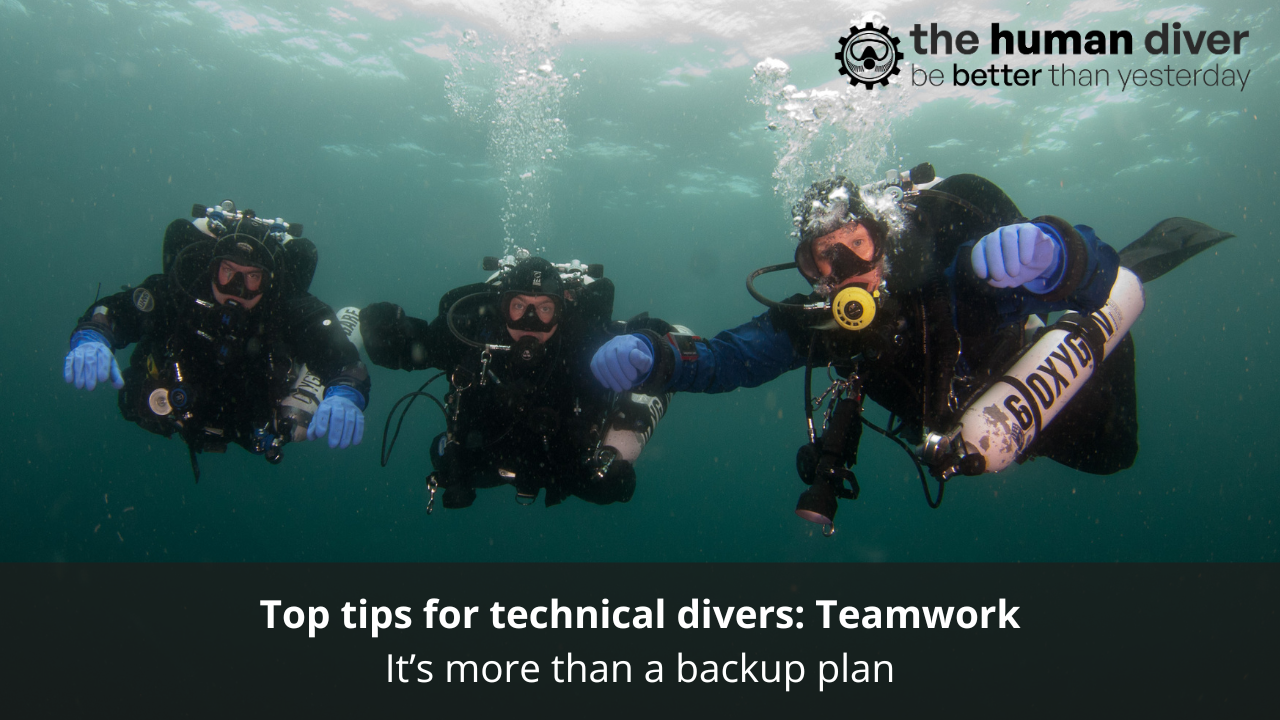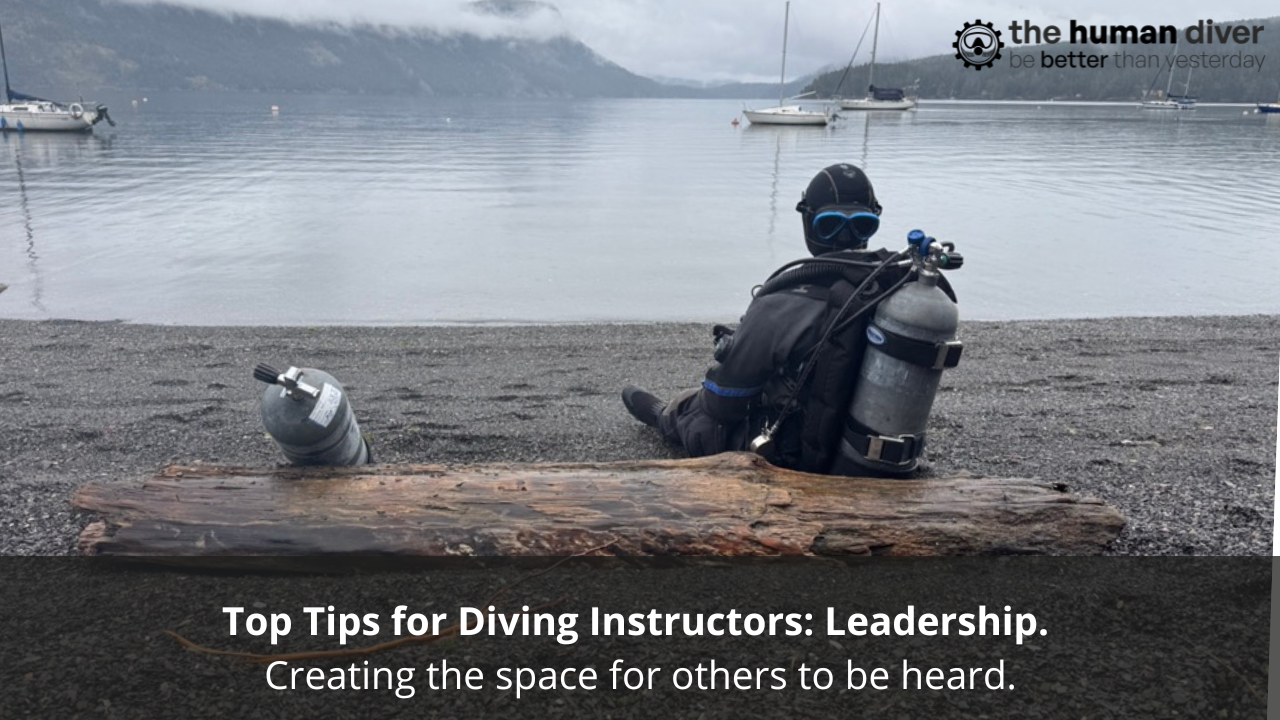
An HF perspective of the Roaring River Fatality
Jan 14, 2023It was great to see the detailed report from the NSS-CDS covering two recent cave diving fatalities, highlighting the technical details behind the two events, and identifying a number of potential causal and contributory factors. The analysis of the equipment, dive computers and details of the resting place helps build a picture of what likely happened.
Building on this is the ability to speak with those involved, and this is obviously a limiting factor with a fatality because the primary decision-maker is no longer with us. Unfortunately, the culture within the diving community makes it hard to have open and honest conversations with team members when there are deviations and drift from ‘normal’ or ‘accepted’ practices.
The original purpose of this blog was two-fold: to provide additional HF perspectives on the Roaring River analysis and to suggest ways in which the community can develop to provide more context within the narratives that are told. However, after doing the analysis it ended up as more than 2500 words and so I will put another blog together about getting more context-rich stories during a learning event.
Roaring River Analysis
The full report can be downloaded from HERE. The brief synopsis is that four divers entered a cave system to set up a longer exploration dive, and one of the four divers suffered an oxygen toxicity seizure at depth. The analysis of the breathing gas showed a different value to that marked, which was also different to what was needed for the planned depth. The gas density also exceeded the recommended limits.
What is 'Normal'?
The first point to say is that an analysis should look at what ‘normal’ looks like as accidents happen as deviations from ‘normal’ rather than deviations from the ‘rules’. ‘Normal’ might be following the ‘rules’ but in many cases, it isn’t. There is always a difference between ‘Work as Imagined’ and ‘Work as Done’ and this gap leads to risk.
In this case, it is not clear what the role of the Dive Manager is or was. How much happens in terms of checking gas analysis, dive plans, trapping errors, and identifying error-producing conditions? There is a clear leadership role here, and given the diverse nature of people, the task, and the team, the ability to modify their leadership style to the situation – sometimes autocratic, sometimes taking a laissez faire approach – is essential. Teamwork is based on mutual accountability, which means team members will be expected to be challenged if the team standards are not being followed, and at the same time, there is an expectation that they will challenge others if they spot something that isn’t right.
“At this time Diver 2 communicated with both Diver 3 and the Victim; and nothing appeared to be wrong. After this point, according to their dive plan, Diver 1 and Diver 2 separated for ascent and decompression, due to a lower decompression obligation for Diver 1.”
This ascent appears to be a compromise of teamwork and team support. This could be because of additional tasking for Diver 1 later on, and so they needed to get out of the water. If this was the case, then the question is asked, could the plan be changed to allow both divers to ascend at the same time providing mutual support? Leaving divers on their own to decompress compromises the additional benefits a team member can bring. Was this a ‘normal’ approach for the team to do?
“Diver 2 made the determination that a rescue was not possible due to the loss of visibility, the guideline, and runaway PO2 spike experienced by Diver 2. (It would later be found that Diver 2 had changed his diluent to a richer Oxygen and leaner Helium mix for decompression, and he had not changed it back to the deep mix when he went to render assistance). Diver 2 began his second ascent at 1134HRS.”
This extract contains a number of human factors/non-technical skills elements. There were situational violations (loss of guideline, spiking of pO2) and a ‘loss of situation awareness’ caused by distraction where the gas wasn’t changed back. However, there was also great SA to recognise that the diluent gas needed to be changed to a leaner mix to allow the descent to take place. It is easy to say with hindsight ‘loss of SA’ but we need to understand where the attention was at the time – in this case, rendering assistance was the critical activity at the time, and the emotional state of Diver 2 would have been at a very high-level meaning that memory function would have been impaired. Once something is forgotten, it is hard to remember it unless there is an external trigger, this is why checklists are so important, they provide a formal cross-check process. (It isn’t possible to use a checklist in this situation, but a team cross-check of gases etc might be possible if there are enough people left in the team).
“At 1135HRS Diver 4 made a descent to 58 ffw, and saw Diver 3 without the victim, while Diver 2 was at 140 ffw on a decompression stop. Diver 4 ascended to the surface and informed the surface manager that this was now a recovery operation. Diver 4 was told by the surface manager not to attempt the recovery alone, to wait for other divers to complete their decompression obligations, and to wait for a Highway Patrol technical diver to arrive on scene.”
While it might appear to be an obvious thing to do to inform the surface manager about the state of affairs, this demonstrates the use of effective communication and sound leadership. A communication tool developed in healthcare to handover patients between teams or when seeking assistance or advice is called SBAR is useful in such a situation.
- Situation: What is the immediate situation?
- Background: How did the situation develop in the way it has, giving relevant information to build an understanding of the context.
- Assessment: What is your assessment of the situation, based on what knowledge, using confirmatory and contrary evidence to validate that position.
- Recommendations: What do you recommend happens next and why.
A full guide on what SBAR is and how to use it is here. You can see it is healthcare-related, but can be easily converted into a diving scenario guide.
“Diver 2 used the Victim’s own Buoyancy Control Device (BCD) to control his buoyancy on the ascent. It should be noted that Diver 2 had to put a significant amount of gas into the Victim’s BCD to begin the ascent, and that the left shoulder pull dump would get stuck open and vent gas.”
It would be interesting to know why the pull dump kept venting. Was there a fault with the dump valve or some debris stuck in it? This might help address any latent issues with the BCD if there are any, or provide some guidance for rescue/recovery divers.
“Post Recovery Equipment Inspection
Left tank LP50 (plumbed diluent, deployed bail out)
2200 psi.
Labeled as 24/00.
Analyzed as 26/00.”
The oxygen analysis appears to have been consistently off by a couple of percentage points. There are a number of questions that come from this, notwithstanding the gas wasn’t suitable for the depth.
- Was this an issue with the analyser of the victim? Or that of the investigation team?
- Was there a check of the analyser used by the victim to see if it was miscalibrated?
- Was there a rush by the victim to do the analysis?
- When was the gas analysed and then labelled?
- What was the last gas dived in the CCR? Thinking about 'how it made sense' to have this gas for a big dive.
- Is the MOD listed on the gas analysis label?
- Is there a team protocol/Dive Manager process to cross-check gas analysis, given its criticality in diving?
- Was trimix planned but then not available for that dive and a lack of psychological safety to say that a mistake had happened, and the diver had the wrong gas?
“Primary computer (Shearwater NERD2)
- Hardwired O2 cells reading .95, .97, .91
- Closed circuit gas set to 24/00.”
The third cell appears to be a fair way off the other two cells. The assumption I am making is that these values come from testing the loop with 100% on the surface. What was the log history for these cells? The Shearwater will vote out a cell at 20% difference, however, there would have been a noticeable difference in pO2 displayed whilst in-water. It is not known what pre-dive checks were completed and whether they cover the requirement to match pO2s/mV on the cells.
“The recommended maximum PO2 at a depth of 190 ffw for diluent gas is 1.1 ATA. Given this and his planned depth of 190 ffw, his maximum FIO2 in his diluent/bailout cylinders should have been 16%, not 26% or even 24%.”
The outcome (high FO2) isn’t the interesting part of this analysis, but rather how it made sense for the diver to have a gas with such a high FO2/pO2 for the planned dive, especially as this dive involved a team. Questions that come from this include:
- Was there a team briefing / cross-check regarding gases and what was in the cylinders and the pO2s?
- Teamwork/communication/validation of assumptions?
- Use of gas as a shared resource in the event of an emergency?
- What conditions were present (social or peer pressure, time pressures...) that made sense for this gas to be used?
- Was the norm to use a scooter at depth, which would limit CO2 generation?
- Why the maximum pO2 of 1.1 when the manual says 1.3? Was this an expedition limitation?
“From the NERD2 data, the Victim was also adding a considerable amount of Oxygen to his breathing loop on the descent.”
What do previous dive logs show in terms of oxygen and gas management along with system operation? Analysing the data from Brian Bugge’s computer, and shown in the ‘If Only…’ documentary, it was clear that Brian had the same failure mode two weeks prior to his fatal dive (unit auto-switch off prior to getting in the water, indicating incomplete checklist execution) but this hadn’t changed his behaviour on that fateful day. Looking back over logs can provide an indication of what ‘normal’ looks like. It can’t categorically determine why something happened but will give an indication.
“When the victim removed his loop from his mouth without closing the DSV, his buoyancy immediately became negative, due to the loss of loop volume.”
It is not clear why this would happen so quickly and so catastrophically unless there is something to do with the Sidewinder design which makes it less resistant to a loop being removed without the DSV being closed. If the diver is already overweighted, then this scenario is not going to help the situation. Understanding how ‘neutral’ the diver is something to consider. Not really possible after a fatal event, but certainly possible in near-miss situations.
“Gas density with resultant carbon dioxide buildup could also have been a contributing factor as the gas density of EAN 26% at 190 ffw with a PO2 of 1.8 is 8.56 grams per liter.”
This is likely to be a source of poor decision-making and contribute to a hyperoxic seizure: there is a potential link between CO2 and oxygen seizures. Research was presented at the Rebreathers in Scientific Diving forum in 2016 by Gavin Anthony and Simon Mitchell examined the impact of gas density on CO2. A summary of that academic piece is here, with the original paper being available here starting page 66.
As far as I know, all agencies teach gas density as part of CCR training, but as there is no ‘continual professional development’ within diving (even as instructors) if new research is published, there is no guarantee it reaches the audience than needs it. Hypercapnia is very hard to detect by the diver themselves (research from Deng et al.) and therefore prevention is better than detection and mitigation. It is not clear if the dive team knew what gases were being used by the victim.
“While it is uncommon for someone to have an oxygen seizure with such a short exposure to breathing a hyperoxic mix, individual diver susceptibility is extremely variable. As such, divers should be conservative in planning their oxygen exposure.”
This is a technical explanation for what happened but doesn’t address the error-producing conditions (technical and non-technical) that led to the event. The final sentence doesn’t appear to address the point that this dive wasn’t down to a conservative planning figure, but rather a failure of many factors covering non-technical skills (decision-making, communication, situation awareness, teamwork & leadership) and the potential for team culture and diving culture to influence the behaviours and subsequent outcomes. Focusing on the outcome (hyperoxia) means that the deeper, latent issues are not addressed, and it is here that greater change can occur.
“We cannot change the human condition, but we can change the conditions in which humans work” – Professor James Reason.
What this means is that we are not going to change human fallibility or the perception of risk, but we can create circumstances where it is easier to do the right thing and harder to do the wrong thing.
The focus needs to shift from outcome to conditions for a couple of reasons. Firstly, it is easy to find differences between the activity/behaviour of those involved and ourselves, when it comes to proximal causes i.e., be more conservative, but we should be looking for similarities in the conditions which create multiple pathways for failure, pathways which are hidden until they are exposed following an adverse event. Secondly, focusing on the outcome addresses THAT dive, but not necessarily wider issues. If we focus on the individual, we can say that the ‘problem’ is fixed, rather than looking at the socio-technical system (people, technology, hardware & environment).
It is recognised and accepted that having conversations with team members who have just lost a friend and colleague is not easy, not least because there is potentially the ‘finger of blame’ coming back at them. However, unless there is a context-rich story told, which includes drift, deviations, modifications, and adaptations, then the lessons identified will invariably focus on factors which are unlikely to make much of a difference. Creating a psychologically-safe environment and a Just Culture is critical, and should be something done all the time, not just when fatal accidents happen.
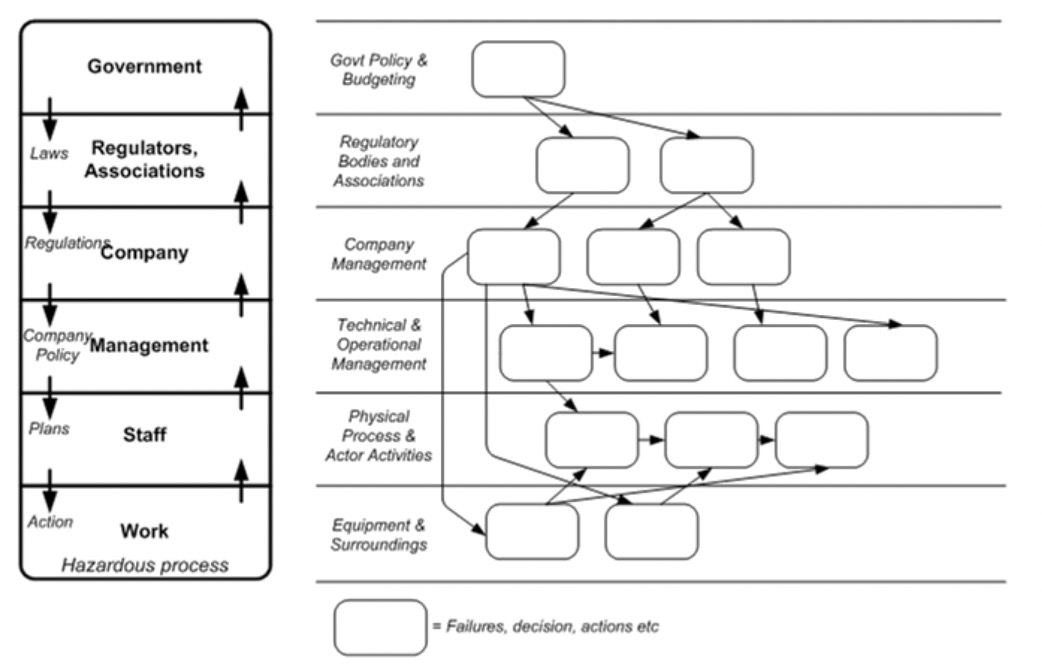 Finally, if we look at this accident model from Jens Rasmussen, we can see there are multiple factors that sit above the event themselves and influence behaviours – the presentation I gave to OzTek and to DAN SA covers this in a bit more detail. Those involved in an investigation will have their own interests and biases, and this shapes the output – What-You-Look-For-Is-What-You-Find. I know I have a HF bias! The diving community at large has an equipment and physiology bias. Systems-based investigations look at all the layers in the model above and the interactions between elements within them. Decisions that are made in the here and now are informed by experiences, drivers, and knowledge from the past and are heavily influenced by the context of now. Understanding local rationality is critical to understanding events, and that is why fatalities are not a great way to learn. You can't ask the dead person how it made sense for them to do what they did.
Finally, if we look at this accident model from Jens Rasmussen, we can see there are multiple factors that sit above the event themselves and influence behaviours – the presentation I gave to OzTek and to DAN SA covers this in a bit more detail. Those involved in an investigation will have their own interests and biases, and this shapes the output – What-You-Look-For-Is-What-You-Find. I know I have a HF bias! The diving community at large has an equipment and physiology bias. Systems-based investigations look at all the layers in the model above and the interactions between elements within them. Decisions that are made in the here and now are informed by experiences, drivers, and knowledge from the past and are heavily influenced by the context of now. Understanding local rationality is critical to understanding events, and that is why fatalities are not a great way to learn. You can't ask the dead person how it made sense for them to do what they did.
Summary
Investigation reports are never complete – there is never enough time or resources to get to the multiple contributory and causal factors which are present within a system. At some point, those involved decide to not go looking any further. The modern safety community recognise that attributing ‘human error’ (or similar attributions) doesn’t help learning. It is the same as saying ‘be more careful’. To improve safety, we need to look at the conditions and the context. The more detail, the more effective the learning can be.
Even though a report can’t be complete, there is nothing stopping those writing it from asking questions to the wider audience. This approach has three benefits – it shows the audience that the writers have considered additional points for which they do not have evidence, secondly, it helps future narrators/investigators ask for this information, and thirdly, it helps create psychological safety by showing the writers don’t have all the answers. The Director of the NTSB once said that his team were frustrated with the loss of (I think) TWA 800 because they couldn’t conclusively explain what had happened. Sometimes you can’t, and that is okay.
The NSS-CDS committee should be congratulated for putting these reports together. It is not an easy job, nor is it quick. The diving community need to realise that it is an iterative process as threads are pulled during the discovery period.
PS, most of the information in this blog has already been shared with the NSS-CDS accident committee so they can use it to improve their own capabilities. At the end of this month, the new Level 3, LFUO course will be released with the first live F2F class running after RF4.0
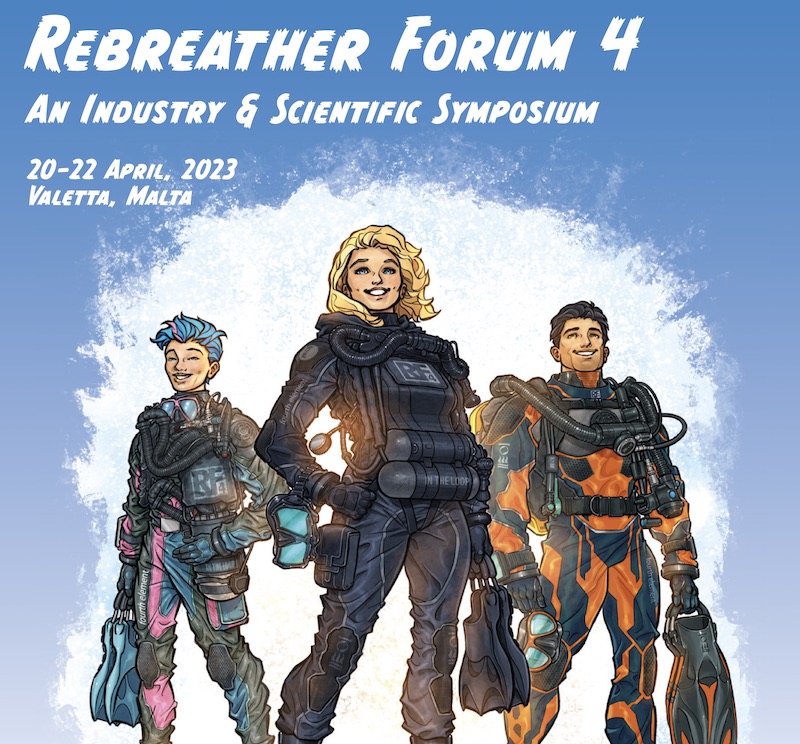

Gareth Lock is the owner of The Human Diver, a niche company focused on educating and developing divers, instructors and related teams to be high-performing. If you'd like to deepen your diving experience, consider taking the online introduction course which will change your attitude towards diving because safety is your perception, visit the website
Want to learn more about this article or have questions? Contact us.





